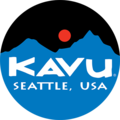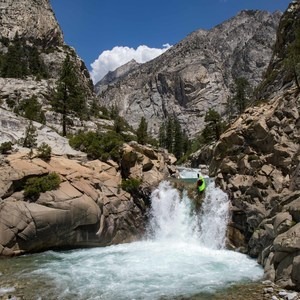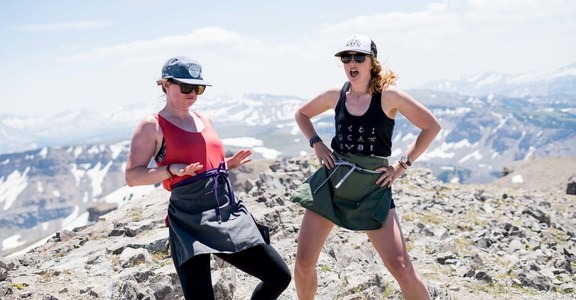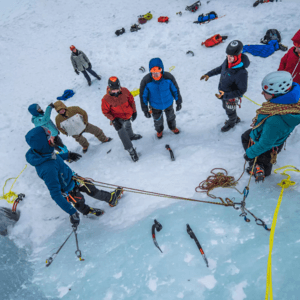If you talk to any pilot who has flown a sea plane, they will often tell you it’s the most fun you can have in an airplane. As a new pilot myself, I was curious about what it would be like, and this past summer I had the chance to get my sea plane rating. I teamed up with Wipaire, the manufacturer of Wipline floats, and headed up to Moose Pass, Alaska, to see what this float flying thing this was all about.
With a population of about 200 people, there are probably more wild animals in Moose Pass then there are humans. It’s small enough you might miss it if you blink when driving through. But don’t let its size fool you, this little town packs a punch. Located on the Kenai Peninsula in the heart of the Chugach National Forest, most people pass through on their way between Anchorage and Seward. There are no major attractions in town, but for those with a sharp eye, this hand-painted Alaska float ratings sign is the gateway to some Alaska magic.
Alaska Float Ratings. I couldn’t have picked a better school to learn from. With their classroom, cabins, and aircraft all located along Lower Trail Lake, it’s a one stop shop for anyone looking to take a scenic flight, enjoy some backcountry fishing and hunting, or get their sea plane rating.
My first view of the docks took my breath away! Seeing those planes on the water surrounded by snow-capped peaks is a site I won’t soon forget. I could hardly believe by the end of the week I was going to be taking an FAA check-ride to show my proficiency in a kind of flying I had never done before!
What are floats? Great question! Floats replace the traditional airplane landing gear to allow operations on water. They are sort of like miniature boat hulls if you look at the shape up close. They provide directional control as well as enough buoyancy to keep the plane safely above water. On the back there are even water rudders. After landing, you put the rudders down with a small lever inside the cabin, which allows you to steer just like you would with the rudders of a sailboat.
Did you know there are over 3 million lakes in Alaska?! This is why sea planes are so popular in that part of the world. Flying on floats opens up so much of the rugged wilderness in Alaska, I can’t imagine a better way to explore it. Instead of needing a runway, all you need is some water, and you have a place to land!
Training time. It’s always fun to fly a new kind of plane. For this course I used the iconic Super Cub. These planes are famous all over Alaska for being one of the best bush planes to get around in. As you can see from the smile on my face in the above photos, they are a ton of fun to fly. One of my favorite parts of flying on floats are the landings. I just couldn't get over the amazing blue color of the water. Generally as a pilot you are staring down a paved runway with some stripes down the middle trying to hit the centerline. I could really get used to aiming for these gorgeous mountain lakes.
One day, after winding down from a day of flight lessons and studying, I smelled something delicious being grilled on the porch. It turned out that while some of the pilots were running errands in Seward, a fisherman offered them some of his extra fresh-caught salmon. It was our lucky day, and the fish was some of the best I’ve ever had. And it all happened just a few feet away from the sea plane dock and the little cabin that was home for the week.
Formation Flying! The next day, KAVU filmer Dan Holmes and I went on a photo mission to get some air to air shots of the sea planes flying together. It was super fun to be in the air so close to another plane, and we got some great pics. If you look closely, you can see an oar strapped to the inside of one of the floats.
One of the evenings after dinner, Dan and I noticed two of the instructors getting into a small boat down at the docks. Being the curious, we walked down to see what they were doing, and they invited us to join them on a little adventure. After a 15-minute boat ride we arrived on a very small island, about the size of a school bus. I half-heartedly kept waiting for the whole island to lift up and for us to realize we were standing on the back of a gigantic turtle. After sharing a few stories and some laughs, we headed back to the sea plane base around midnight; it is only dark for a few hours each night, so there was plenty of light left to help us get home.
The Wildlife! Speaking of gigantic turtles, I figure I should introduce you to some of the town’s animals. First, there is the stuffed bear at Trail Lake Lodge Restaurant. Next is the unofficial mascot of Alaska Float Rating, a cat whose name I can’t remember. And lastly, the dog that stole part of my heart. He was a big goofy German shepard mix of some kind who just wanted a little TLC and would chew his leash off every time he could and then run over to say hi to us. If I was driving back to the Lower 48, I probably would have invited him back to Utah with me.
Before I knew it, the end of my trip had fast arrived and it was time to take my check-ride. As any pilot will tell you, no one likes check-rides. It’s like taking your driving test, but 100 times worse. Not to mention they are very expensive. It starts out with two to three hours in the classroom to test your understanding of the aircraft systems, aeronautical decision making, and weather, just to name a few of the topics. If the examiner feels like you have an understandings of the ground knowledge, then it’s time for the flying test. I’ll spare you the details, but I’m happy to say I passed the check-ride. The week's worth of flight time, note card studying, and getting grilled by Vern, the owner of Alaska Float Ratings, was totally worth it. Having taken my test on the very last day of the trip, it was bittersweet to start packing up for the drive back to Anchorage. The past week had been a blur of scenery, studying, and new flying visuals. I will be back to Moose Pass for sure. A place as pretty as that deserves a return trip.
After dropping a friend off at the airport I went straight to the world's busiest sea plane base, Lake Hood. Located next to the international airport, it’s worth a visit because they have over 1,000 aircraft parked there and they average over 190 flights in and out per day. As I enjoyed my celebratory beer, I found a deep sense of satisfaction in having earned another pilot rating that is such a rich part of Alaska’s history. Just one week before I had looked at float planes with a sense of awe and curiosity. The sense of awe was still there, but along with it came a healthy dose of knowledge and experience. Turns out flying floats is both easier and harder then it looks, and it really is some of the best fun you can have in an airplane. If the stars align, maybe one day I’ll even have my own float plane one day! I would encourage any pilots out there to go get their float rating. It will make you a better pilot, and you will enjoy a style of flying that started over 100 years ago!
After a quick snack it was time to head back to the big airport and catch my flight back to Salt Lake City. I took a few minutes before checking in to wander around the general aviation ramp across the street from the main terminal, and I enjoyed seeing a variety of aircraft I’ve only seen before at an airshow. From bush planes to sea planes to planes with eyes, there was a little bit of everything there. Having had a jam packed week, I was looking forward to a relaxing flight back to the Lower 48. In aviation we call each new rating you get a “license to learn.” Even though a student may pass a check ride, the real learning begins outside of the training environment. I’m looking forward to continuing to gain knowledge and experience out in the real world as a working pilot this next year. And who knows, maybe I’ll even come back to Alaska and fly for a season. They are always looking for pilots who don’t mind flying over rugged terrain and landing in unusual places. Having had a taste of what Alaska flying is like, it’s an option that may be hard to say no to.
KAVU is run by full-on fun fanatics seeking the next adventure. Our formula for living well is simple: Build good times into everything you do. So that's where we start. KAVU creates tru outdoor wear, stylish bags, and other busy livin' necessities.
Picture this: A perfect day as defined by you. The kind that makes you feel alive, grateful, and blissfully exhausted.
That's a KAVU Day. And we want you to have as many as you can. That's why "Have a KAVU Day" is more than our slogan, it's the reason KAVU exists.






Comments
Sign In and share them.